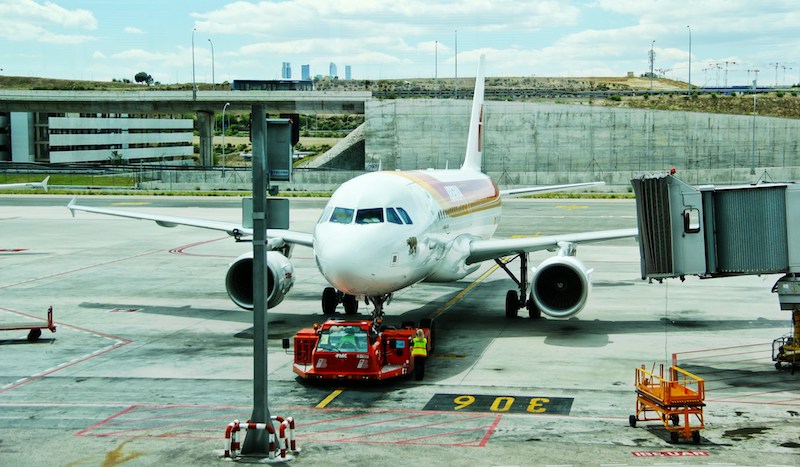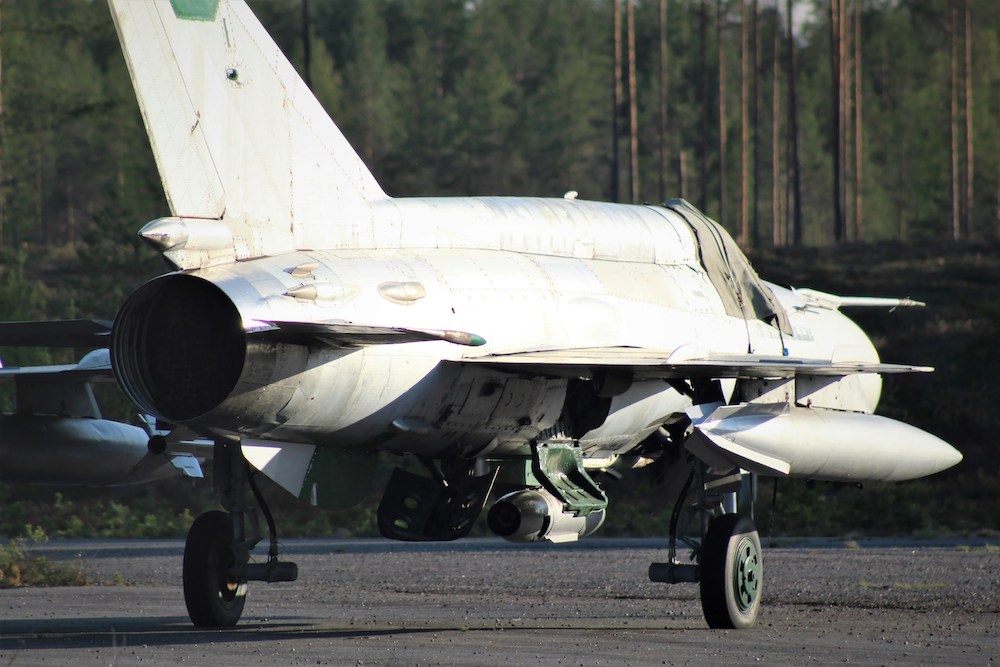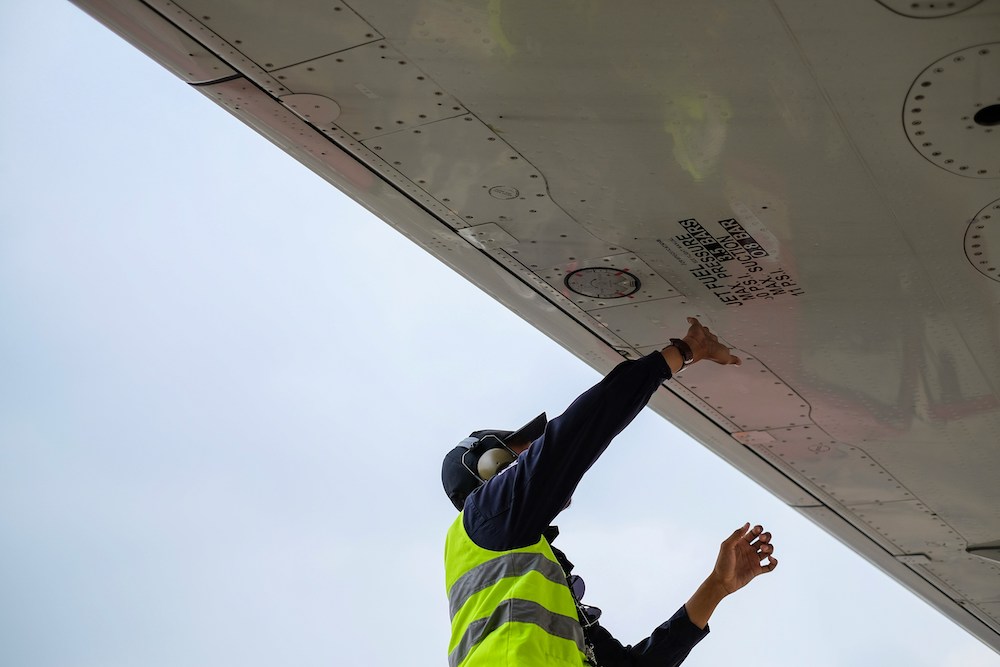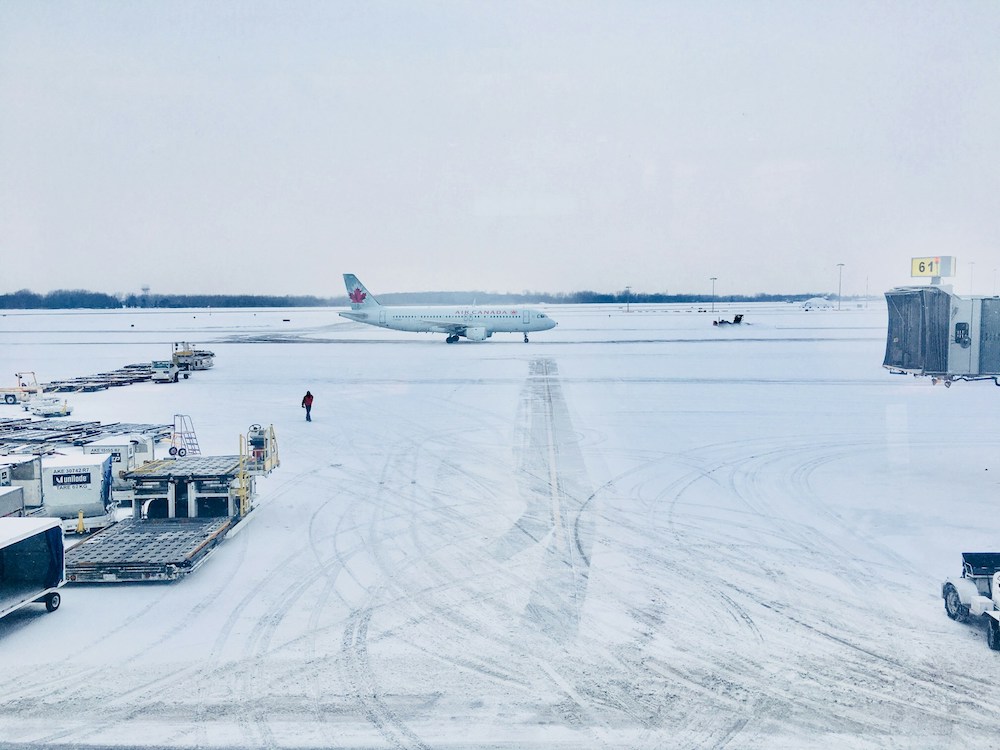
When completed correctly, aircraft maintenance is a careful, detailed, and thorough process that adheres to all standards established aviation standards and regulations. Its primary objective is to guarantee the safety and efficiency of the aircraft, ensuring the utmost comfort for its passengers.
This critical process unfolds through three primary categories: Line Maintenance, Base Maintenance, and Maintenance, Repair, and Overhaul (MRO). Each type fulfills a distinct purpose, encompassing various facets of aircraft care.
Aircraft Line Maintenance
Line maintenance stands at the forefront of aircraft care, meant to guarantee the daily readiness of aircraft for safe and reliable operations. This type of maintenance is performed directly on the ramp or at the gate, often under tight schedules to minimize disruptions to flight operations. Line maintenance’s scope primarily focuses on resolving immediate issues that could affect flight schedules, safety, or efficiency, ensuring that aircraft meet all necessary standards for operation.
Example Tasks Performed:
- Routine Servicing and Minor Repairs – These are small, easy fixes that don’t keep the aircraft out of action for too long. Examples of minor adjustments that would be conducted during aircraft line maintenance include changing worn-out parts, refilling fluids, and everything else needed to prepare the aircraft for flight.
- Pre-flight Checks – Prior to each flight, pilots and maintenance crews diligently undertake a thorough check to ascertain the aircraft’s readiness and confirm the optimal functionality of all its systems. The overarching goal is to ensure the utmost safety and comfort for passengers throughout the entirety of the flight.
- Transit Checks – Transit checks are carried out during short stops between flights, focusing on critical areas that could impact the next leg of the journey. Pilots and maintenance crews are more detailed and thorough during transit checks than pre-flight checks.
- Overnight Checks – When aircraft are parked overnight, maintenance teams use the opportunity to inspect more thoroughly. This lets maintenance teams tackle problems that couldn’t be fixed during the day.
- Troubleshooting and Minor Avionics and Systems Repairs – Line maintenance also involves identifying and fixing minor avionics problems and other systems. This can include software updates, recalibrating sensors, and repairing minor electrical faults.
Frequency and Timing of Aircraft Line Maintenance:
Aircraft line maintenance tasks are performed daily or between flights, depending on the specific requirements. How often maintenance is done depends on the aircraft’s schedule and the results of ongoing checks. Airlines and maintenance teams use advanced scheduling systems to ensure these tasks don’t disrupt flights too often.
Aircraft Base Maintenance
Base maintenance delivers a more detailed tier of aircraft upkeep, usually carried out within a hangar at an aviation base. This critical procedure addresses substantial issues that extend beyond the scope of routine maintenance, safeguarding the aircraft’s long-term health and safety. Meticulously scrutinizing every component, even the inconspicuous or concealed ones, play a significant role in confirming adherence to the most stringent safety standards, thereby securing the aircraft’s readiness for flight.
Aircraft A Checks
A Checks serve as the first level of base maintenance, bridging the gap between the frequent, less intensive line maintenance and the more extensive checks that follow. A Checks require the aircraft to be taken out of service for a short period, usually overnight, to allow maintenance crews to perform a thorough inspection and servicing.
Tasks Performed:
- Detailed Inspections of Internal Systems – This inspection examines the hydraulic systems, electronics, and flight controls for any wear or potential failure. These inspections go more profound than the routine checks done during line maintenance, often requiring access to parts of the aircraft that are usually sealed or difficult to reach during normal operations.
- Emergency Equipment Checks – A Checks make sure that all emergency gear, such as life vests, escape slides, oxygen masks, etc, work perfectly and are ready to use immediately if needed.
- Inspection and Servicing of Specific Aircraft Components – This may involve inspecting the plane’s landing gear, engines, and primary structure for any signs of strain or damage. Components may be tested, lubricated, or replaced based on the check findings.
Frequency and Timing of Aircraft A Check
The A Check is typically done every 400-600 flight hours or after 200-300 flights, depending on the aircraft model. It takes about 50-70 man hours and is usually performed in an airport hangar, lasting at least 10 hours. Once the maintenance is complete, the next maintenance check will take place around 8-10 weeks.
However, the frequency and schedule of this maintenance check usually depend on the aircraft type, flight frequency, and number of flights it has been on since the most recent check. Airlines have the flexibility to postpone this check under certain predefined conditions.
Aircraft B Checks
B Checks expand upon the foundation laid by A Checks, delving deeper into the aircraft’s systems and structures. While A Checks are more frequent and less intrusive, B Checks are scheduled less often but more comprehensively. The primary difference is in the scope and depth of inspections, with B Checks requiring more time and potentially taking the aircraft out of service for a few days.
Tasks Performed:
- Structural and System Inspections – B Checks are more thorough than A Checks. During inspection, the aircraft’s structure, wings, and tail are checked for damage, rust, or wear that could affect safety. Parts crucial for flight support are also carefully examined to ensure they’re in top condition.
- Advanced System Checks – A thorough examination of the aircraft’s systems is conducted during B Checks. This includes checking the avionics, hydraulic, and fuel systems to ensure they operate correctly according to standards.
- Interior Inspections – The aircraft’s interior is thoroughly examined during B Checks. They focus on the seats, bathrooms, kitchens, and emergency exits to ensure everything is perfect for passengers’ safety and convenience.
Frequency and Timing of Aircraft B Check
B Checks typically occur every 6-8 months and need around 160-180 man-hours to get done. They’re typically wrapped up within 1-3 days at an airport hangar. The timing for B Checks is similar to A Checks. Still, many airlines are blending B Check tasks into A Checks, meaning everything needed for a B Check gets covered over several A Checks.
Aircraft C Checks
C Checks represent a significant milestone in the aircraft maintenance schedule, focusing on the comprehensive examination of nearly every aspect of the aircraft. C Checks go beyond A and B, requiring the airplane to be grounded for several weeks. They’re crucial for the long-term health and reliability of the aircraft.
Tasks Performed:
- Comprehensive Aircraft Examination – During C Checks, the entire aircraft is thoroughly inspected, even parts that aren’t usually checked during A or B Checks. This includes the airframe, all the flight control systems, and all the equipment onboard.
- In-depth Inspection of Structural Components – They carefully check the aircraft’s body, wings, landing gear, and essential structural parts. Sometimes, they use sophisticated tools like X-rays, ultrasounds, or other sophisticated testing methods that do not cause damage. The aim is to find any wear and tear, rust, or weakness for fixing.
- Interior Refurbishment – The seats, kitchen areas, bathrooms, entertainment systems, and the overall interior of the aircraft can also be upgraded during C checks. This makes flying more comfortable and enjoyable for passengers.
Frequency and Timing of Aircraft C Check
About every 20-24 months, or after a certain number of flight hours set by the manufacturer, airplanes go through a C Check. This detailed inspection checks almost every part of the aircraft, grounding it for 1 to 4 weeks. Since it needs a lot of room, the check is done in a big hangar at a maintenance base. Doing a C Check can take up to 6,000 hours of work by the crew.
Aircraft D Checks
The D Check is like the ultimate makeover for an aircraft, known as a “heavy maintenance visit” or HMV. It involves completely taking apart and inspecting the aircraft like never before. Depending on the aircraft’s size and condition, it could take weeks or even months to carry out a complete check.
Tasks Performed:
- Complete Aircraft Overhaul – The aircraft is taken apart during the D Check, and its basic structure is checked and fixed. The seats, kitchens, bathrooms, and all the panels and surfaces are taken out and thoroughly examined.
- In-depth Structural Analysis – The aircraft structure, wings, and tail, which are significant components of the aircraft body, are inspected for damage, rust, or wear. Advanced tools like ultrasound and X-rays can be used to check things thoroughly during this inspection.
- System Overhauls and Replacements – They fix or swap out parts of the aircraft’s systems like hydraulics, avionics, power, and fuel when needed. This ensures all components are up to current standards and perform reliably until the next D Check.
- Corrosion Treatment and Protection – A crucial task in the D Check involves addressing corrosion issues in the airplane. This entails repairing affected areas and applying protective coatings to prevent the recurrence of rust.
Frequency and Timing of Aircraft D Check
The D Check occurs approximately every 6-10 years. Still, it depends on how much the aircraft is used, what the manufacturer suggests, and what regulations must be followed. The D check requires the most maintenance work, money, and supplies.
Aircraft MRO (Maintenance, Repair, and Overhaul)
Maintenance, Repair, and Overhaul (MRO) involves activities that boost an aircraft’s safety and dependability. This is crucial in aviation to make sure each aircraft operates smoothly and adheres to all aviation standards. It plays a vital role in safety and compliance, contributing to the improvement of an aircraft’s longevity, lifespan, and overall value. Whether it’s making minor tweaks, addressing simple issues, or conducting extensive overhauls, MRO is instrumental in keeping both older and newer aircraft fleets safe, airworthy, and in alignment with the latest standards.
Tasks Performed:
- Heavy Maintenance – It involves comprehensive checks similar to C and D checks, where the aircraft undergoes extensive inspections and maintenance. It includes structural repairs, corrosion control, and significant modifications to improve performance and safety.
- Major Modifications and Repairs – MRO tasks often include improving aircraft quality to meet new regulations or customer preferences. This might mean upgrading the aircraft’s avionics and layout or adding fuel-efficient engines or wing extensions to improve aerodynamics.
- Engine and Major Component Replacement and Repair – Keeping engines, landing gear, and other significant aircraft parts in good shape is crucial in MRO. Sometimes, they need regular check-ups, but other times, they might need to be wholly fixed or replaced to ensure they meet stringent performance and safety criteria.
Key Takeaways: Aircraft Maintenance Checks
Adhering to diligent maintenance practices permeates every aspect of aircraft operation and ownership. Strictly adhering to schedules for Line, Base, and MRO checks is vital to improve operational efficiency, maintain regulatory compliance, and prioritize safety. This meticulous approach to airplane maintenance not only minimizes issues for airlines and owners but also extends the lifespan of their planes, alleviating the complexities associated with aircraft management.
To learn more about aircraft maintenance, read:
- Aircraft Fleet Management – Optimizing Processes
- The Essential Guide: How Inoperative Equipment Flow Charts Work in Aviation
- Aerospace Supply Chain Challenges and Potential Solutions – 2024 Predictions
- Aircraft Predictive Maintenance and Its Role in Reliability-Centered Maintenance (RCM)
Written by Michael Olusoji
Michael Olusoji is a distinguished aviation writer with over five years of in-depth expertise.
His comprehensive research and analytical prowess have culminated in a myriad of articles that dissect the intricate facets of the aviation sector, particularly the engineering nuances of aircraft components.



